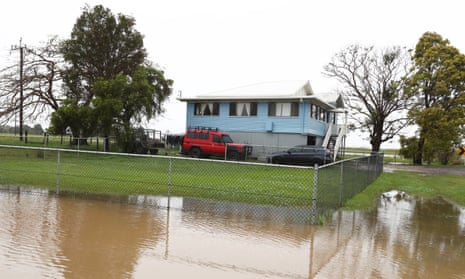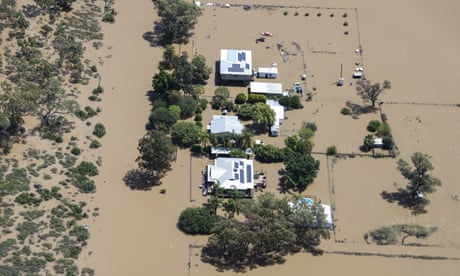Extract from The Guardian
Costs are rising nationwide but especially in flood-hit parts of the nation, and low-income residents are worst affected.

Sat 12 Nov 2022 01.00 AEDT
Last modified on Sat 12 Nov 2022 01.02 AEDTA near-endless series of climate change related disasters – from the Black Summer bushfires across much of eastern Australian in 2019-20 to regular bouts of floods spanning three La Niña years – has sent premiums rocketing, particularly in areas insurers deem to be higher risk.
Elly Bird, executive director of Resilient Lismore, said businesses rather than residents in her flood-hit region were finding it harder to secure insurance.
“Businesses are finding it almost impossible to reinsure,” Bird said, adding the issue for many households was trying to settle claims.
Nine months on from the record floods in Lismore, many people remained in limbo. “Not everybody has the skills to be able to advocate for themselves – or have the energy or ability to fight,” Bird said.
A report from the Climate Council earlier this year found that across Australia about 520,940 homes and businesses – or one in every 25, will be “high risk” and uninsurable. In addition, 9% of properties (one in 11) will reach the “medium risk” classification by 2030.
Chris Judd, a retiree living in Port Douglas in far north Queensland, said her home and contents insurance jumped $1,200, or about two-thirds, in the past year alone. That was despite her house being in a region supposed to be covered by the new $10bn Australian Reinsurance Pool that formally began operations in July.
“They’ve got you over a barrel. It’s a necessary evil– if there was a cyclone and the house was flattened, what would we do?” Judd said. “I just feel it’s really greedy.”
Research published in August by the Actuaries Institute showed insurance premiums were hitting low-income residents hardest. For those facing annual home insurance premiums of more than $2,000, half were earning less than $65,000 a year.
The Albanese government has launched a parliamentary inquiry into the new reinsurance pool, telling Guardian Australia that MPs from the former Morrison administration were among those lobbying for improvements to a scheme that had been touting falls in cyclone-related premiums of as much as 58%.
In June, the Insurance Council of Australia said it was committed to working with the federal government and communities “to improve affordability and availability of general insurance for all Australians, particularly those in Northern Australia who are vulnerable to worsening extreme weather impacts as a result of climate change”.
The ICA noted the corporation’s estimates that as many as 24% of residential home policyholders in Queensland with minimal cyclone risk would see premium increases, in some cases of more than 20%, even with the pool coming into effect.
David Henderson, chief engineer of the Townsville-based Cyclone Testing Station, said it was important that efforts to make homes and businesses more resilient weren’t reduced by the bid to lower average premiums.
“The real fear is if the risk is masked, are we going to go backwards?” Henderson said.

No comments:
Post a Comment